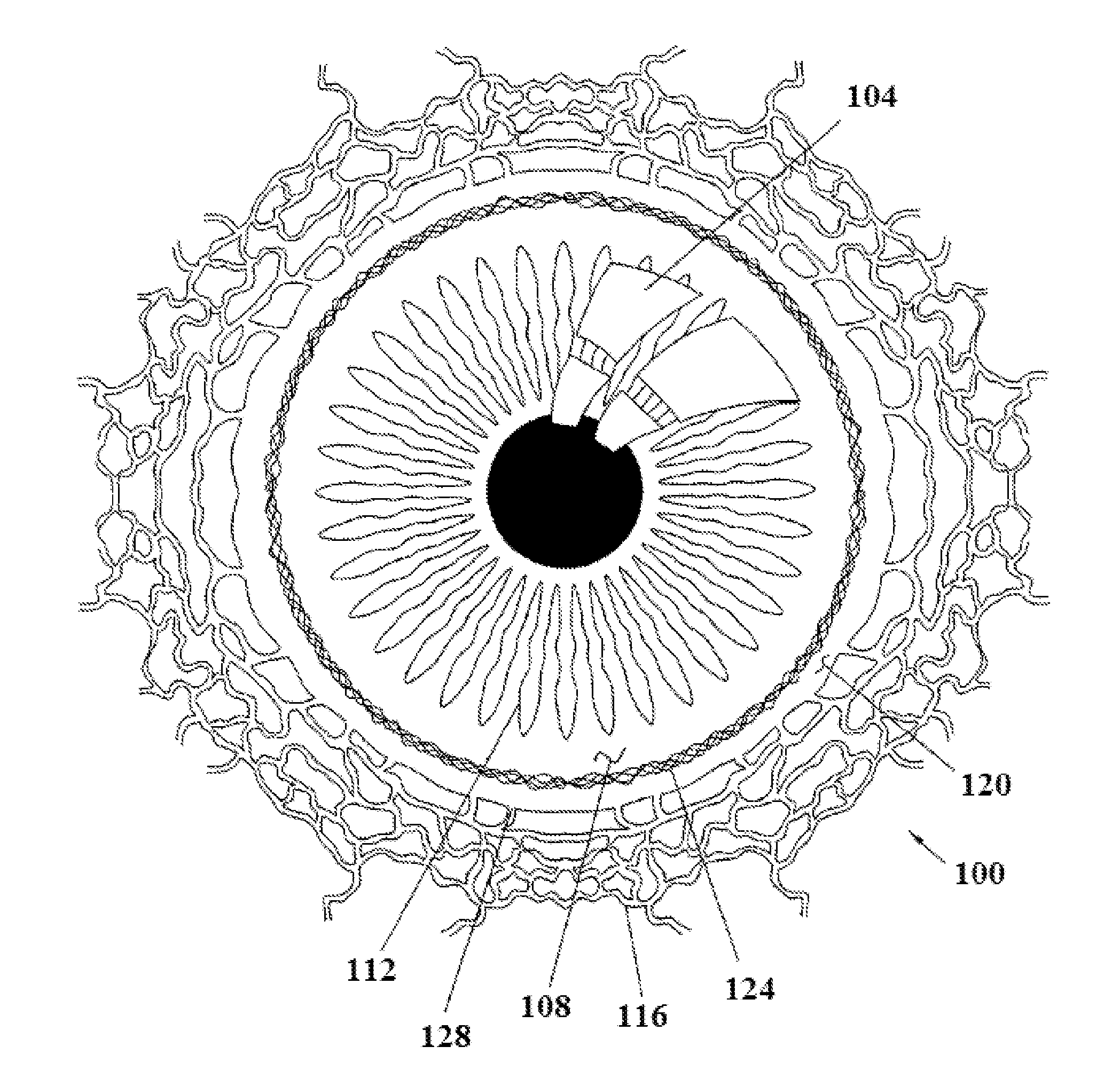Implants for reducing intraocular pressure
a technology of intraocular pressure and implants, which is applied in the field of devices, can solve the problems of damage to the optic nerve that transmits sensory information from the eye to the brain, and loss of peripheral vision, so as to facilitate flow and reduce intraocular pressure
- Summary
- Abstract
- Description
- Claims
- Application Information
AI Technical Summary
Benefits of technology
Problems solved by technology
Method used
Image
Examples
examples
[0046]A human eye perfusion model (i.e., a cadaver eye) was used to investigate intraocular pressure lowering by ocular implants of the present invention. The ocular implant was made by micromolding process. Stead state intraocular pressure was achieved using a constant flow set-up with Dulbecco's fluid. Baseline intraocular pressure values were recorded. An ocular implant measuring 150 microns in diameter, 8 mm in length, and having a maximum wave length of 1 mm and maximum amplitude of 400 microns was then threaded through Schlemm's canal and the surgical site was sealed using 10-0 nylon suture and cyanoacrylate glue until the wound was water tight. The perfusion set-up was then re-initiated and the new steady state intraocular pressure was recorded using pneumatonometry and an indwelling pressure gauge. This was repeated 4 times in human eyes free of glaucoma. All eyes were pseudophakic. Intraocular pressure values were as follows:
[0047]
Pre-implant steady stat...
PUM
 Login to View More
Login to View More Abstract
Description
Claims
Application Information
 Login to View More
Login to View More - R&D
- Intellectual Property
- Life Sciences
- Materials
- Tech Scout
- Unparalleled Data Quality
- Higher Quality Content
- 60% Fewer Hallucinations
Browse by: Latest US Patents, China's latest patents, Technical Efficacy Thesaurus, Application Domain, Technology Topic, Popular Technical Reports.
© 2025 PatSnap. All rights reserved.Legal|Privacy policy|Modern Slavery Act Transparency Statement|Sitemap|About US| Contact US: help@patsnap.com



